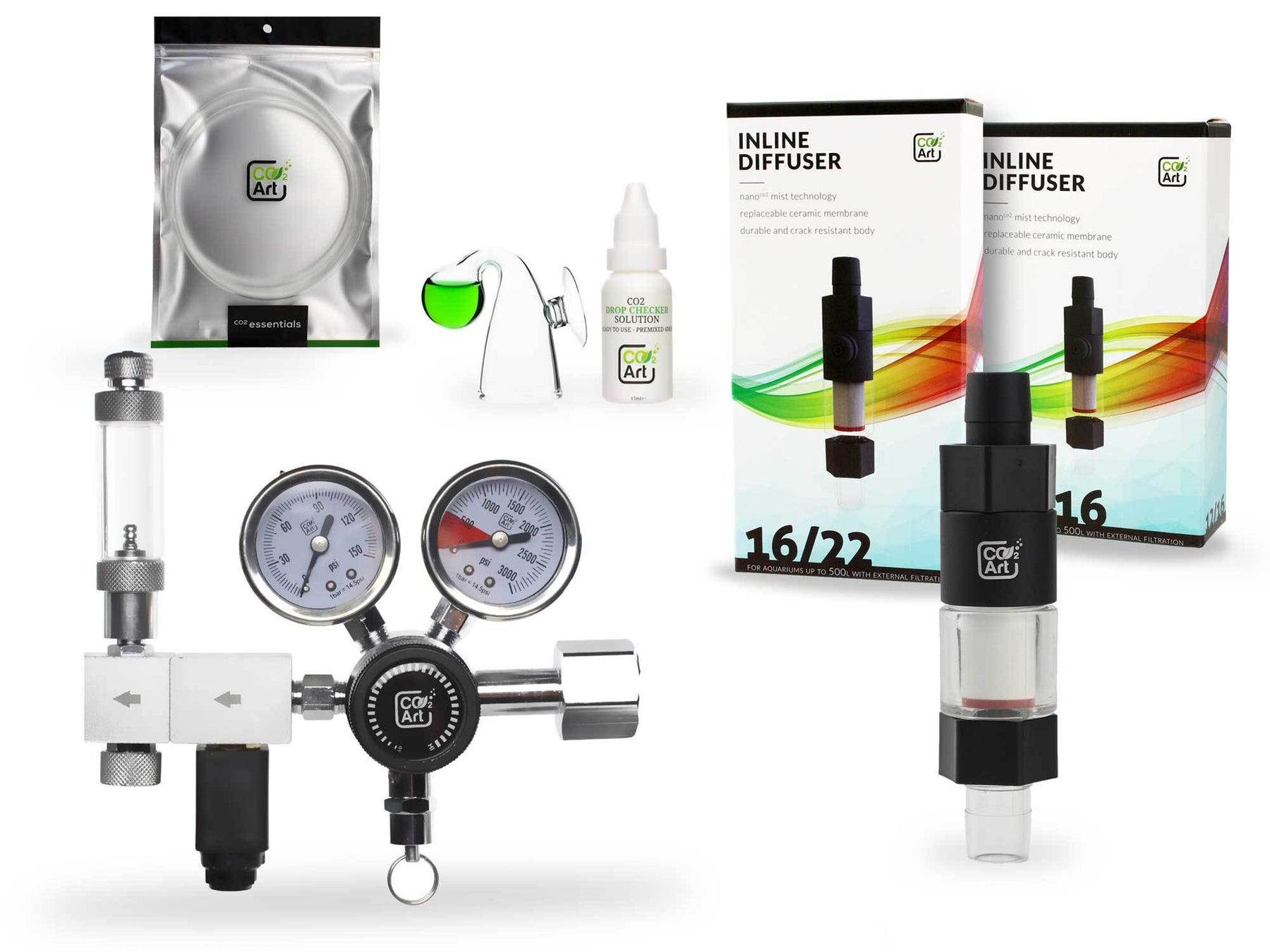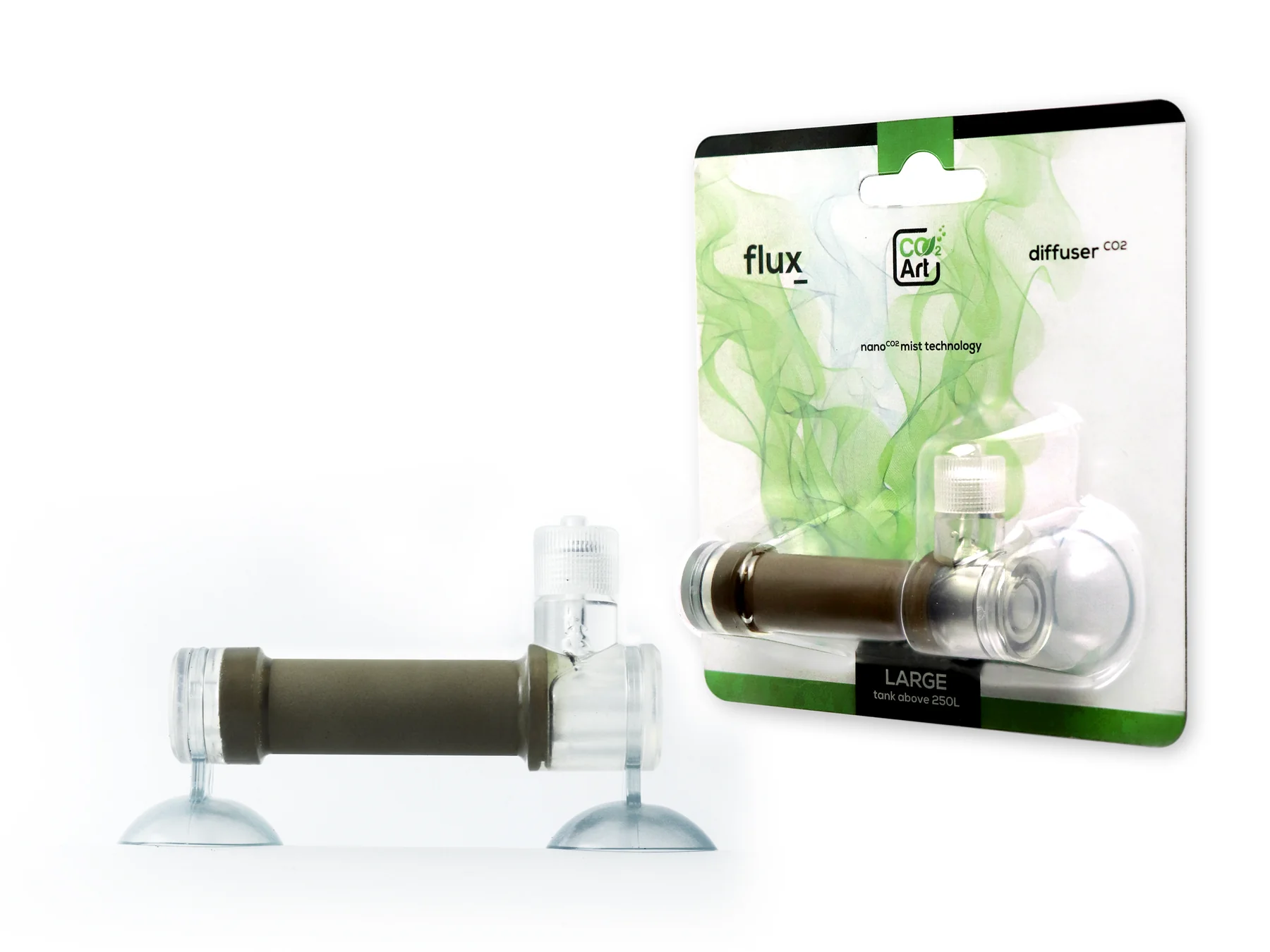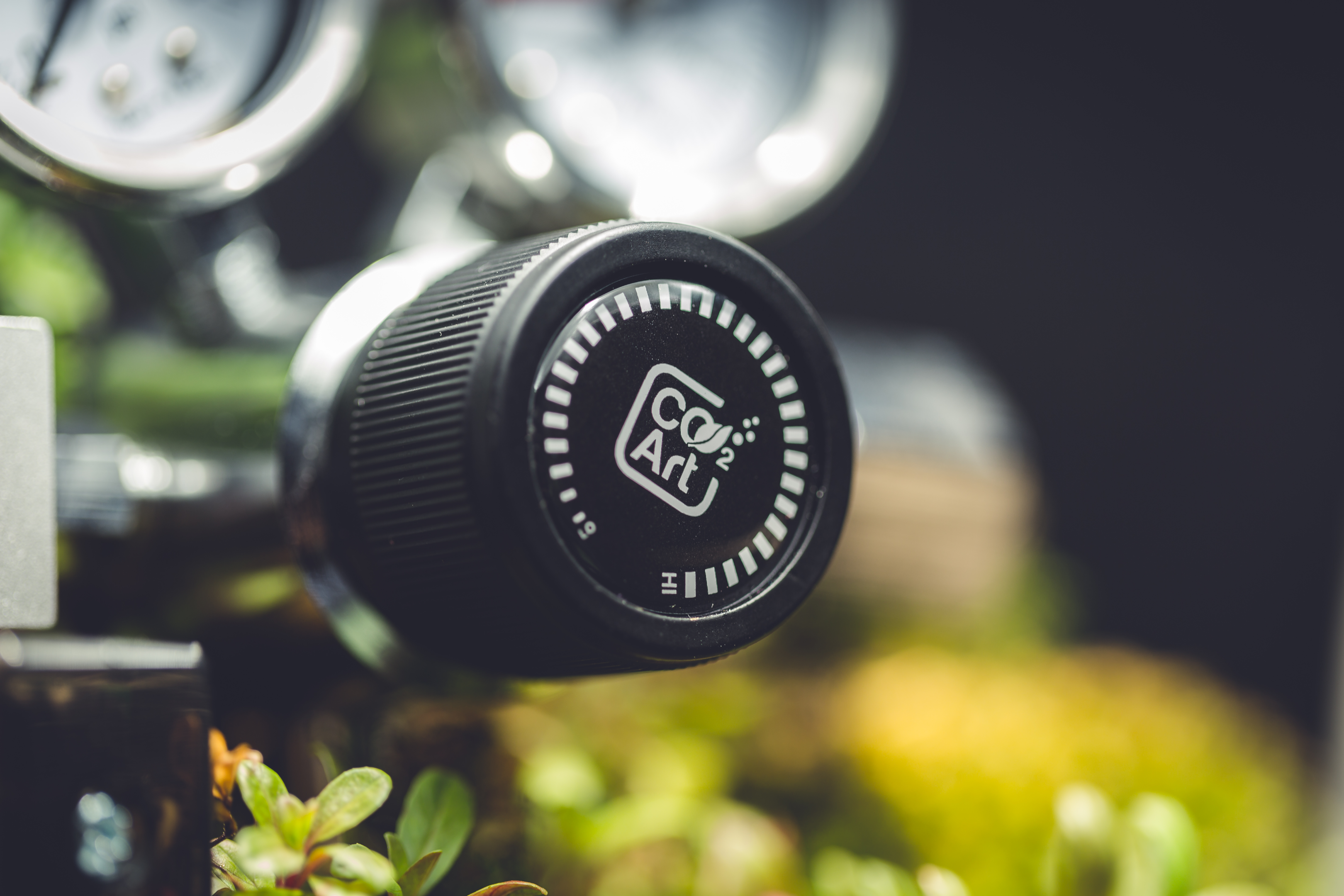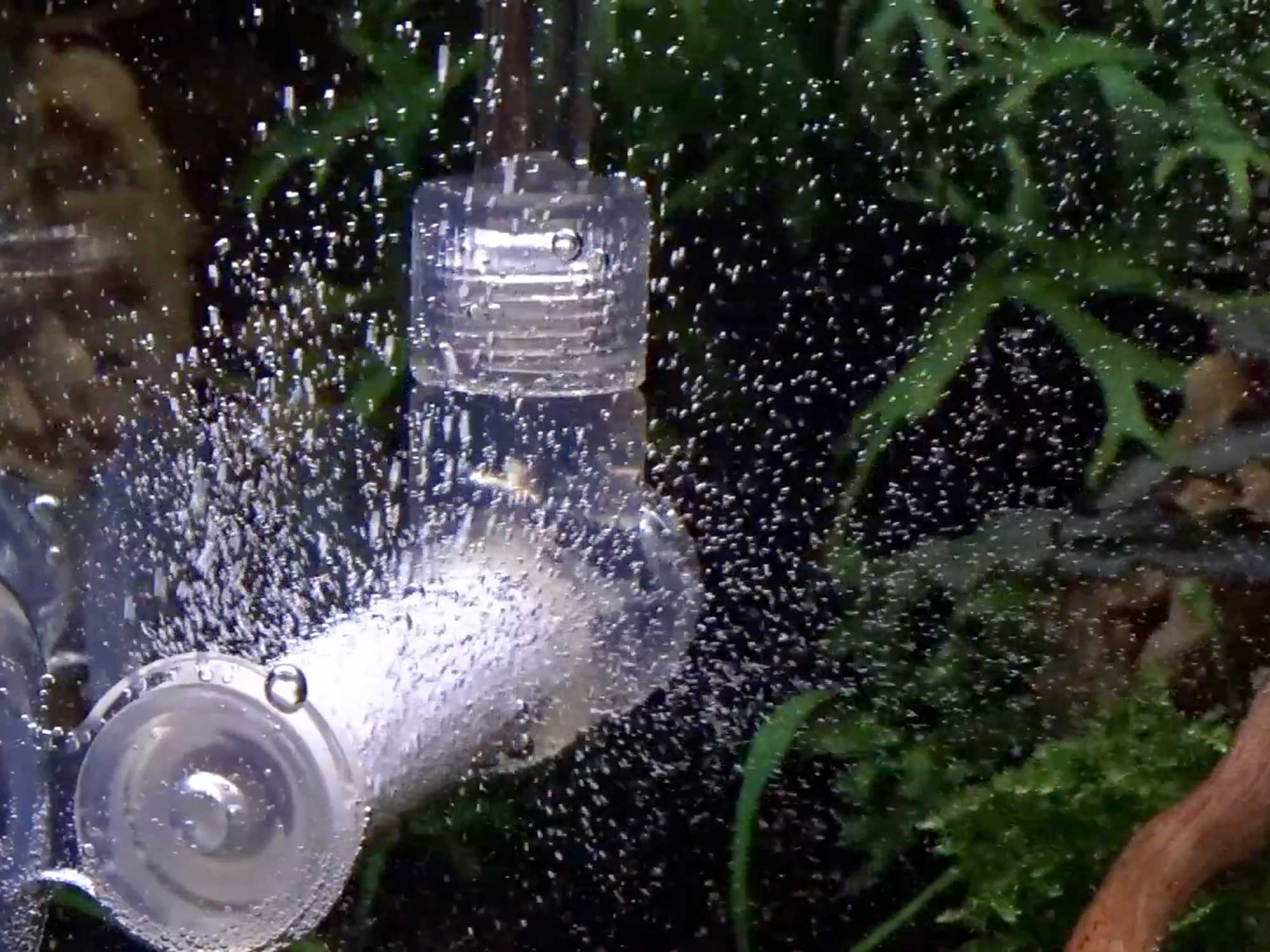Choosing the right CO2 diffuser
Aquarium enthusiasts often ponder, "Do I need a CO2 diffuser for my aquarium?" This question arises primarily in planted tanks, where aquatic flora flourish under optimal conditions. A CO2 diffuser is an essential tool for maintaining these conditions, facilitating the CO2 diffusion necessary for plant photosynthesis. Whether you're new to the hobby or a seasoned aquarist, understanding the role of a CO2 diffuser for fish tank health is crucial.
In a planted aquarium, CO2 is a key factor in promoting healthy plant growth. While fish and invertebrates naturally produce CO2 through respiration, it is often insufficient for demanding plant species. This deficit can lead to stunted growth and algae overgrowth. A CO2 diffuser introduces controlled amounts of CO2 into the water, enhancing photosynthesis and ensuring lush, vibrant plants. Without adequate CO2 diffusion, plants may struggle to thrive, impacting the overall balance and aesthetic appeal of the aquarium.
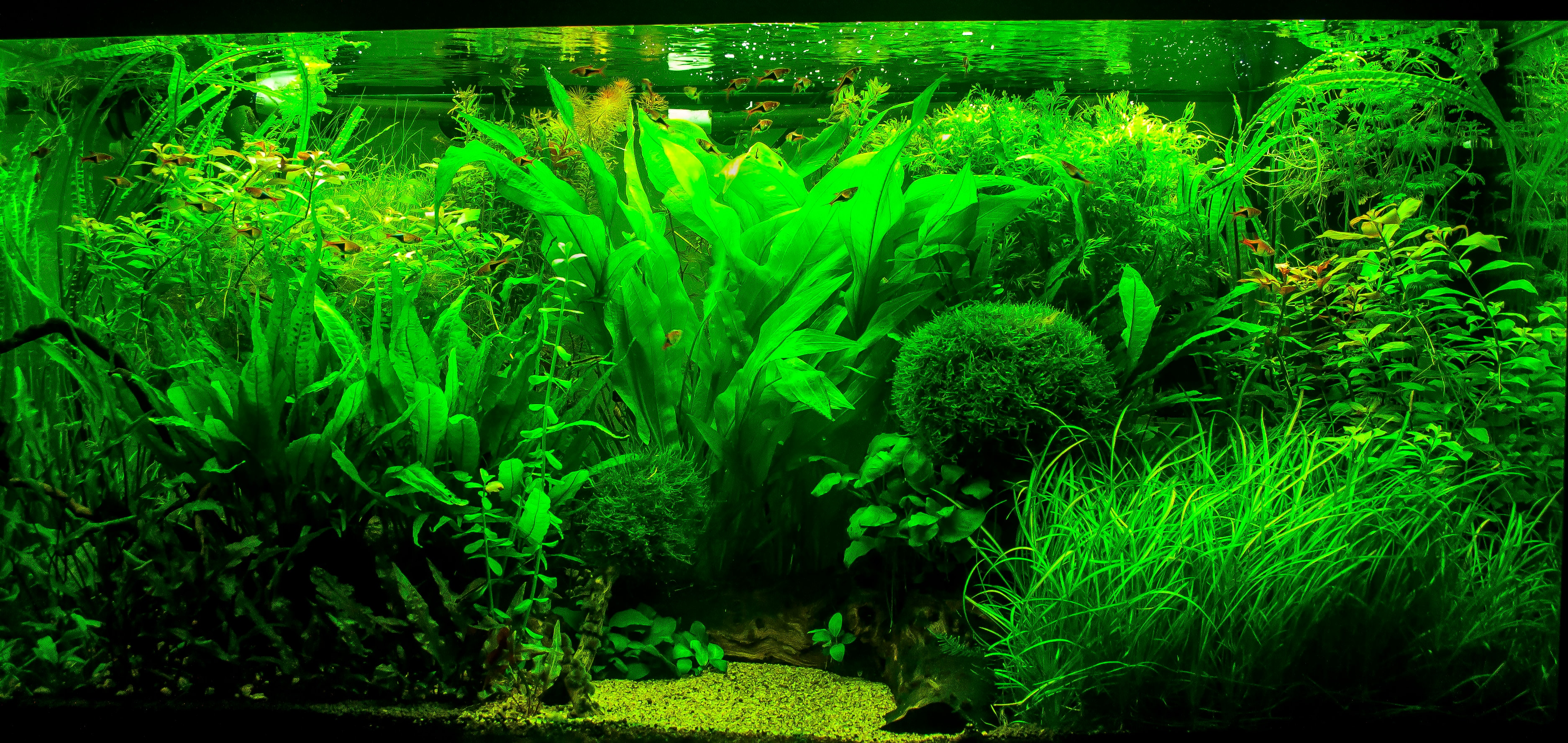
Inline CO2 Diffusers
Among the various methods available, an inline CO2 diffuser offers distinct advantages. Positioned outside the tank, typically along the aquarium's filtration system, an inline CO2 diffuser efficiently injects CO2 into the water flow. This setup minimizes equipment visibility within the tank while ensuring a consistent distribution of CO2 throughout the water column. However, the installation of an inline CO2 diffuser requires careful consideration of plumbing compatibility and maintenance accessibility.
The design of an inline CO2 diffuser typically involves a chamber or reactor where CO2 gas is mixed with the water flowing through the filtration system. This method ensures that CO2 is effectively dissolved and distributed throughout the aquarium, benefiting plants located at different depths. Aquarists appreciate inline CO2 diffusers for their efficiency and ability to integrate seamlessly with existing filtration setups, providing a streamlined approach to maintaining optimal CO2 levels in the aquarium water.
In-Tank CO2 Diffusers
In contrast to inline CO2 diffusers, in-tank CO2 diffusers are submerged directly into the aquarium. These diffusers release CO2 directly into the water column, where it dissolves and becomes available for plant uptake. In-tank CO2 diffusers come in various designs, such as ceramic discs or glass reactors, each offering unique dispersion methods. While simpler to set up than inline CO2 diffusers, their effectiveness can depend on tank size and layout, influencing CO2 diffusion efficiency.
The placement of an in-tank CO2 diffuser is crucial for maximizing CO2 distribution. It is typically positioned near the water flow or in areas with high plant density to ensure thorough mixing and dissolution of CO2. Aquarists favor in-tank CO2 diffusers for their ease of installation and direct delivery of CO2 to plant roots, promoting robust growth and vibrant colors. However, proper placement and adjustment are essential to avoid CO2 wastage or fluctuations in water chemistry, ensuring a balanced ecosystem for fish and plants alike.
Comparison of Inline vs. In-Tank CO2 Diffusers
Choosing between inline and in-tank CO2 diffusers involves weighing several factors. Inline CO2 diffusers excel in maintaining aesthetic cleanliness by keeping equipment out of sight, ideal for aquarists prioritizing tank design. On the other hand, in-tank CO2 diffusers provide more direct CO2 diffusion into the water, potentially enhancing efficiency in smaller setups. Each type has its advantages and considerations, such as ease of installation, maintenance requirements, and compatibility with different aquarium setups.
Aquarists often select inline CO2 diffusers for their efficiency in larger tanks where maintaining visual appeal is crucial. These diffusers integrate seamlessly with external filtration systems, ensuring consistent CO2 distribution without cluttering the tank space. In contrast, in-tank CO2 diffusers are preferred for smaller aquariums or setups where direct CO2 delivery to plants is prioritized. The choice ultimately depends on the specific needs of the aquarium, including plant species, tank size, and the desired aesthetic and functional balance.
Importance of CO2 in Planted Aquariums
Maintaining optimal carbon dioxide levels is crucial for the health and growth of aquatic plants in a planted tank. Carbon dioxide gas serves as a key nutrient, fueling photosynthesis and enabling plants to convert light energy into chemical energy. Without sufficient carbon dioxide, plants may exhibit stunted growth and yellowing leaves, diminishing the overall aesthetics of the aquarium. An inline diffuser or in-tank diffuser plays a pivotal role in delivering carbon dioxide efficiently to plant roots, ensuring lush vegetation and a thriving aquatic ecosystem.
In a planted tank, the choice between an inline diffuser and an in-tank diffuser depends on several factors. Larger tanks may benefit from an inline diffuser, which can handle higher working pressures and provide efficient carbon dioxide distribution throughout the water column. Alternatively, smaller tanks may find in-tank diffusers with ceramic membranes more suitable, as these devices produce fine bubbles that are easily absorbed by aquatic plants. Monitoring carbon dioxide levels using a drop checker and employing a bubble counter alongside a check valveensures precise carbon dioxide dosing and prevents fluctuations that can stress fish.
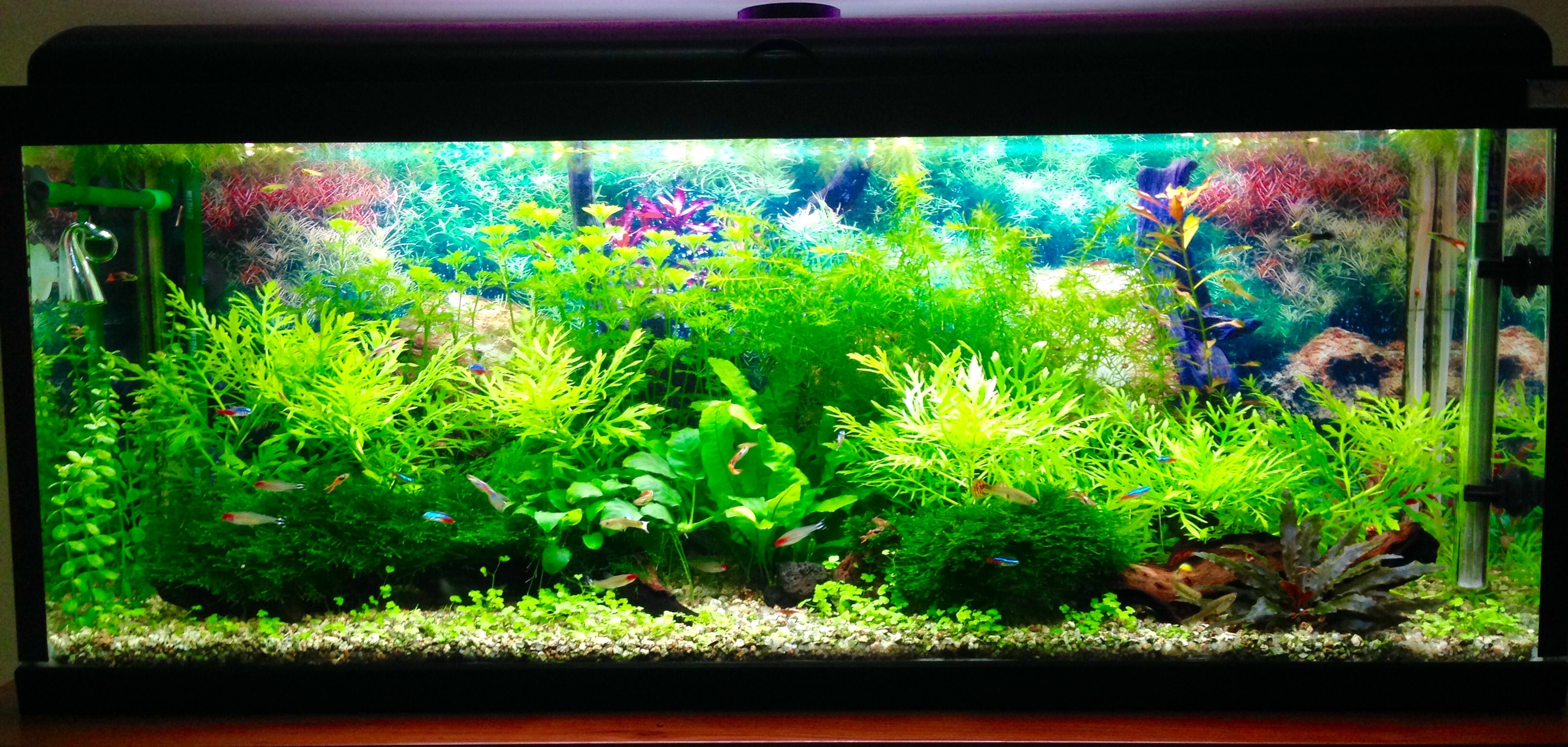
Factors to Consider When Choosing a CO2 Diffuser
Selecting the right CO2 diffuser involves evaluating several critical factors to achieve optimal plant growth and maintain aquarium balance. The size and layout of your aquarium play a crucial role in determining whether an inline diffuser or an in-tank diffuser is more efficient. Larger tanks often require higher working pressure and benefit from the broad distribution of carbon dioxide provided by an inline diffuser. These devices are typically integrated with the aquarium's filtration system, ensuring efficient and consistent carbon dioxide delivery to all corners of the tank.
Conversely, smaller tanks may find in-tank diffusers with ceramic membranes more practical. These diffusers produce tiny bubbles that linger longer in the water, maximizing carbon dioxide absorption by aquatic plants. Monitoring pressure with a reliable regulator and ensuring access to a bubble counter helps maintain stable carbon dioxide levels. Additionally, employing a drop checker provides a visual indication of carbon dioxide saturation, guiding adjustments to achieve the optimal CO2 solution for your planted aquarium.
Installation and Setup of CO2 Diffusers
The installation of CO2 diffusers, whether inline or in-tank, requires careful consideration to ensure effective carbon dioxide distribution and minimal impact on aquarium inhabitants. When setting up an inline diffuser, it is essential to integrate it seamlessly with the aquarium's filtration system. This involves connecting the diffuser to the filter outlet using suitable tubing and ensuring a secure seal to prevent pressure loss.
In contrast, in-tank diffusers with ceramic membranes are placed directly inside the aquarium, typically near the aquatic plants for optimal carbon dioxide absorption. Proper positioning ensures that tiny bubbles produced by the diffuser disperse evenly throughout the water column. Monitoring pressure levels with a dedicated regulator and using a bubble counter to gauge carbon dioxide injection rate are critical during setup. Additionally, incorporating a check valve prevents water from siphoning back into the CO2 system, maintaining system integrity and preventing potential damage.
Maintenance Tips for CO2 Diffusers
Regular maintenance of CO2 diffusers is essential to sustain efficient carbon dioxide supplementation in a planted tank. For inline diffusers, periodic inspection of the filter and tubing connections ensures continuous CO2 flow without leaks. Cleaning the diffuser chamber and replacing ceramic membranes as needed helps maintain optimal bubble size for effective carbon dioxide dissolution.
Similarly, in-tank diffusers require routine cleaning to prevent blockages and maintain efficient carbon dioxide dispersion. Gently scrubbing the diffuser surface and checking for larger bubbles or clogs ensures uninterrupted CO2 delivery to aquatic plants. Monitoring pressure readings and adjusting the regulator settings as necessary prevent fluctuations that can stress fish and plants alike. Incorporating a drop checker in the aquarium provides visual feedback on carbon dioxide levels, guiding adjustments to achieve the desired CO2 solution for healthy plant growth.
CO2 Injection Methods
In addition to diffusers, several methods are available for CO2 injection in aquariums, each offering unique advantages and considerations. Inline diffusers are favored for their integration with existing filtration systems, efficiently distributing carbon dioxide throughout the tank. These diffusers operate under high pressure, ensuring optimal CO2 saturation levels beneficial for aquatic plants in large tanks.
Alternatively, in-tank diffusers with ceramic membranes provide a direct approach to CO2 injection, producing tiny bubbles that enhance carbon dioxide absorption by plants. Their simplicity makes them suitable for small tankswhere precise CO2 delivery is critical for maintaining plant health. Regardless of the method chosen, using a bubble counter and drop checker aids in monitoring CO2 levels, ensuring a balanced CO2 solution without causing stress to aquarium inhabitants.
Choosing the Right CO2 Diffuser for Your Aquarium
Selecting the optimal CO2 diffuser hinges on several factors, including tank size, plant density, and desired ease of maintenance. Inline diffusers excel in larger tanks where high working pressure ensures efficient carbon dioxide distribution. Their integration with the filtration system minimizes visual clutter while providing consistent CO2 delivery across the tank.
Conversely, in-tank diffusers with ceramic membranes are well-suited for smaller tanks due to their ability to produce fine bubbles that linger longer in the water, maximizing CO2 absorption by aquatic plants. Consideration of regulator settings and pressure monitoring ensures precise CO2 dosing, preventing fluctuations that can harm fish and plants. Evaluating maintenance needs, such as cleaning frequency and membrane replacement, helps sustain optimal CO2 diffusion over time, promoting healthy plant growth and maintaining aquarium aesthetics.
Effectiveness and Efficiency of CO2 Diffusers
The effectiveness of CO2 diffusers in a planted aquarium hinges on several factors, including pressure regulation and bubble size control. Inline diffusers operate under high pressure, delivering carbon dioxide efficiently throughout large tanks. These diffusers produce tiny bubbles that maximize CO2 absorption by aquatic plants, promoting robust growth and vibrant colors.
In-tank diffusers with ceramic membranes offer a direct approach to CO2 injection, suitable for small tanks where precise CO2 delivery is essential. Monitoring pressure with a reliable regulator ensures consistent CO2 levels, vital for maintaining optimal conditions in the aquarium. Utilising a drop checker provides visual feedback on CO2 saturation, guiding adjustments for a balanced CO2 solution.
Conclusion
In conclusion, selecting the right CO2 diffuser is crucial for maintaining a thriving planted aquarium. Whether choosing an inline diffuser for large tanks or an in-tank diffuser with ceramic membranes for small tanks, each option offers unique benefits in CO2 supplementation. Monitoring pressure levels, utilizing bubble counters, and employing drop checkers are essential for achieving and maintaining optimal CO2 levels.
By understanding the role of CO2 in promoting healthy aquatic plants and employing the appropriate CO2 diffusion method, aquarists can create a balanced ecosystem that enhances both plant growth and aquarium aesthetics. Regular maintenance and careful consideration of tank size and layout ensure sustained success in maintaining CO2 levels and promoting the overall health of the aquarium.
Meet our bestseller! The Pro-Elite Series Complete Aquarium CO2 System with New Inline CO2 Diffuser!
